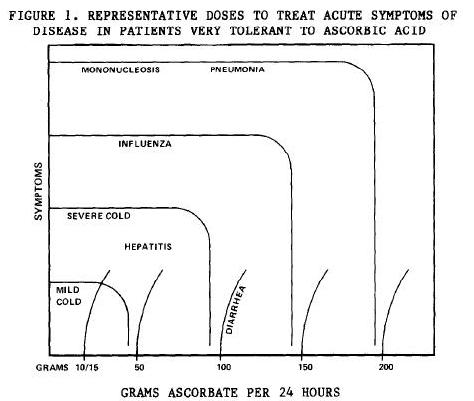On Friday I discussed a recent paper showing that a high-tryptophan diet caused mice, after 4 to 12 weeks, to start harming themselves by tearing out fur from their bellies and forepaws. The mice also developed ulcerative dermatitis – open sores on their skin. [1]
I closed with a promise that on Monday I would suggest some reasons why a high tryptophan diet might cause these diseases.
However …
C57BL/6 Mice Are Prone to Ulcerative Dermatitis
The breed of mice used in the study, C57BL/6 mice, are an inbred strain featuring some genetic mutations which make them prone to ulcerative dermatitis and compulsive behavior.
Upon looking into the literature, it seems that if you look at these mice cross-wise they get ulcerative dermatitis.
For instance, vitamin A causes ulcerative dermatitis in these mice because of mutations that impair the disposal of excess retinol:
A number of C57BL/6 (B6) substrains are commonly used by scientists for basic biomedical research. One of several B6 strain-specific background diseases is focal alopecia that may resolve or progress to severe, ulcerative dermatitis…. Four B6 substrains tested have a polymorphism in alcohol dehydrogenase 4 (Adh4) that reduces its activity and potentially affects removal of excess retinol. Using immunohistochemistry, differential expression of epithelial retinol dehydrogenase (DHRS9) was detected, which may partially explain anecdotal reports of frequency differences between B6 substrains. The combination of these 2 defects has the potential to make high dietary vitamin A levels toxic in some B6 substrains … [2]
Malnourishment seems to lead to spontaneous development of ulcerative dermatitis. The cause may be oxidative stress, since supplemental vitamin E cures the ulcerative dermatitis:
In this study, we fed a standard NIH-31 diet fortified with vitamin E to C57BL/6 mice and strains of mice with a C57BL/6 background that had spontaneously developed ulcerative dermatitis (UD)…. Of 71 mice, 32 (45%) had complete lesion re-epithelialization with hair regrowth. Complete lesion repair was not influenced by sex, age, or coat color. The average time to complete lesion repair ranged from 2 to 5 weeks, and there was no correlation with sex or coat color. The positive response to vitamin E suggests that protection from oxidative injury may play a role in the resolution of UD lesions … [3]
When scientists studying cancer applied a carcinogenic toxin to the skin of these mice, they developed not cancer but – you guessed it – ulcerative dermatitis:
In this study, heterozygous p53-deficient (p53(+/-)) mice … and wild-type (WT) litter mates were subjected to a two-stage skin carcinogenesis protocol with 7,12-dimethylbenz[a]anthracene and 12-O-tetradecanoylphorbol-13-acetate. Instead of skin carcinomas, however, the chemical treatment protocol caused ulcerous skin lesions, and 89% of mice fed ad libitum died from infection/septicemia. When WT mice were restricted to 60% of the average calorie intake of the respective ad libitum group, however, only 33% developed such lesions, and the CR mice survived twice as long on average as the ad libitum mice. [4]
It’s interesting that calorie restriction reduces the ulcerative dermatitis rate. Note that the mice went on to die of sepsis from an unknown infection; this suggests that these mice probably had some chronic pre-existing infection that was laying dormant, but emerged to become acute when the mouse was stressed by the toxins.
So far we’ve seen that malnutrition (lack of antioxidants) and exposure to toxins (vitamin A, carcionogens) can cause ulcerative dermatitis. Our three major causes of disease are malnutrition, toxins, and pathogens, so to complete our survey we should check whether infections cause ulcerative dermatitis in these mice.
Indeed they do. The most common infection in laboratory mice is fur mites, and fur mite infections induce ulcerative dermatitis in all strains of C57BL mice. [5]
Since diseases become more common with age, we shouldn’t be surprised to see that the rate of spontaneous ulcerative dermatitis rise with age in these mice:
A spontaneous, severely pruritic ulcerative dermatitis was initially observed in 33/201 (16.4%) aged C57BL/6NNia mice obtained from the National Institute of Aging. This ulcerative dermatitis also developed in 21/98 (21%) aged C57BL/6 mice in a subsequent experimental group obtained from the same source. The average age of onset in the initial group was 20 months. These animals were negative for ectoparasite infestation and primary bacterial or fungal infection. The lesions varied from acute epidermal excoriation and ulceration to chronic ulceration with marked dermal fibrosis…. The elucidation of the pathogenesis of this disease is important because of the significant percentage of animals affected … [6]
Given that there are so many possible triggers of ulcerative dermatitis in these mice, I decided to shift the topic of this post a bit, and focus on the specific possibility that chronic infections might play a role.
Lab Mice Are At Risk For Chronic Infections
As I’ve said many times, everyone gets chronic infections. The world is saturated in germs, and sooner or later the ones that can maintain persistent infections take up residence in all of us. So health is determined by the relative balance of power between immune system and pathogens, not by exposure.
Lab mice are at heightened risk for chronic infections because of their living conditions. In the case of the tryptophan-poisoned mice, here’s a description of their accommodations:
All subjects were adult (over 6 months of age) C57BL/6 mice, bred from C57BL/6J progenitors, and housed with same-sex siblings…. Lights were on a 14-10-h light-dark cycle. Mice were caged in standard shoebox cages (12.7 cm high, 433 cm2 floor area) with wire lids…. Ages ranged from 24-66 weeks of age (mean, 47 weeks). The number of mice per cage was variable, ranging from 2-4 mice per cage. [1]
These shoebox cages are small: 433 cm2 floor area translates to roughly 15 by 29 cm or 6 by 11 inches. The lid is 5 inches high. With four mice to a cage, each mouse gets a 3 by 5 inch area.
There is little room to exercise. Crowding is stressful.
Moreover, there is no natural sunlight, and therefore no vitamin D production.
All of these factors tend to impair immune function. Their casein, cornstarch, and soybean oil diets can’t be helpful to immune function either.
Cages are generally fairly closely packed in animal facilities. The mice generally cannot touch mice in adjacent cages, but respiratory pathogens and fur mites spread easily. If one mouse in a facility gets fur mites, usually all the others get infected soon afterward, and the whole room has to be quarantined.
Note also that the mice are old enough – 6 to 15 months – to have had extensive exposure to any chronic pathogens carried by either their mouse neighbors or their human handlers.
So it wouldn’t be surprising if the lab mice in this study had chronic infections.
Chlamydiae Infections in Lab Mice
C. pneumoniae is a zoonotic bacterium that crossed from reptiles to mammals about 60 million years ago and can infect both humans and animals.
Unfortunately, nobody seems to have bothered to see if C. pneumoniae is commonly present in “healthy” lab mice. However, in test tubes C. pneumoniae infects mouse brain cells just fine:
Inspired by the suggested associations between neurological diseases and infections, we determined the susceptibility of brain cells to Chlamydia pneumoniae (Cpn). Murine astrocyte (C8D1A), neuronal (NB41A3) and microglial (BV-2) cell lines were inoculated with Cpn…. Our data demonstrate that the neuronal cell line is highly sensitive to Cpn, produces viable progeny and is prone to die after infection by necrosis. Cpn tropism was similar in an astrocyte cell line, apart from the higher production of extracellular Cpn and less pronounced necrosis. In contrast, the microglial cell line is highly resistant to Cpn as the immunohistochemical signs almost completely disappeared after 24 h. Nevertheless, significant Cpn DNA amounts could be detected, suggesting Cpn persistence. [7]
So in the mouse glial cells which were most resistant, C. pneumoniae could maintain infections even if it didn’t do much. In mouse neurons and astrocytes, C. pneumoniae was able to reproduce freely and would eventually kill the cells.
In a different mouse microglial cell line, EOC-20, C. pneumoniae replicates rapidly, increasing 9-fold in 3 days. [8] So it appears that C. pneumoniae can infect all the major cell types of the mouse brain.
In humans, C. pneumoniae generally reaches the brain by first infecting the blood vessels that feed the brain. In our C57BL/6 mice, C. pneumoniae can create a vascular infection after a single dose in the nose:
In C57BL/6J mice on a nonatherogenic diet, C. pneumoniae were detected in the aorta only 2 weeks after a single intranasal inoculation in 8% of mice. The persistence of C. pneumoniae in atheromas suggests a tropism of C. pneumoniae to the lesion. [9]
Repeated inoculation of C57BL/6J mice resulted in inflammatory changes in the heart and aorta in 8 of 40 of mice … [10]
In a ranking of mouse strains in susceptibility to C. pneumoniae infection, C57BL/6 mice occupy a middle position:
The first mouse models for C. pneumoniae infection … used several mouse strains that differed in susceptibility to infection. Swiss Webster mice and NIH/S mice were highly susceptible, followed by C57BL/6 mice, whereas BALB/c mice were least susceptible. [11]
C. pneumoniae infection typically begins with a brief, mild respiratory infection that is followed by spread of the pathogen to other organs via infected white blood cells and establishment of a persistent infection:
Infection of mice with C. pneumoniae resulted in a self-limiting pneumonia [30–32,77]. Depending on the dose given, mice displayed symptoms, like dyspnea, weakness and weight loss. The symptoms reached a maximum within 2 to 4 days and rarely lasted longer than 1 week….
Isolation of viable C. pneumoniae organisms from the lungs was generally possible up to 4 weeks after infection and occasionally up to 6 weeks [31,32,42,47,49,52,54,66,72]. However, C. pneumoniae antigens and DNA were detected in the lungs for a much longer period, up to 20 weeks after infection [42]. The presence of C. pneumoniae antigens in the lungs was limited to macrophages in alveoli and bronchus-associated lymphoid tissue [63]. These findings suggested a latent persistence of the organisms, which was confirmed by reactivation of pulmonary infection using cortisone-induced immunosuppression experiments [50,51]….
C. pneumoniae infection was not limited to the respiratory tract only. Following local infection, spreading of C. pneumoniae to multiple organs throughout the body was detected by PCR and immunohistochemical staining up to 20 weeks [42]. The dissemination was probably mediated by peripheral blood monocytes as they were positive both by PCR and isolation in some studies, whereas blood plasma was negative [38,47]. [11]
Interferon Gamma and the Immune Defense Against Chlamydiae
In both humans and mice, immune defense against Chlamydiae is mediated principally by interferon gamma. Mice that lack interferon gamma or its receptor suffer prolonged severe infections:
The central role of IFN-? in clearance is evidenced by prolonged infections that occur in IFN-?, and IFN-? receptor-, deficient mice (10, 11). [12]
Infant mice exposed to Chlamydiae die within 2 weeks if they lack interferon gamma:
Importantly, infected mice deficient in IFN-gamma or IFN-gamma receptor demonstrated enhanced chlamydial dissemination, and 100% of animals died by 2 wk postchallenge. [13]
Might Chlamydia Infection Have a Connection to Compulsive Behavior and Ulcerative Dermatitis?
I started looking into these Chlamydia infection papers to see if they might explain why C57BL/6 mice given high levels of tryptophan might develop compulsive behavior and ulcerative dermatitis.
It’s possible. The logic goes like this.
First, tryptophan is crucial to Chlamydial growth; it is a precursor to niacin, the key vitamin of bacterial metabolism, and is also essential to a number of Chlamydial proteins. So a high-tryptophan diet will promote Chlamydiae infections.
Chlamydiae trigger the innate immune response mediated by interferon gamma.
So interferon gamma will be elevated in Chlamydiae-infected mice. Interestingly, the only study I found that gave interferon gamma directly to mice found that it caused ulcerative dermatitis:
Daily subcutaneous doses of 0.02, 0.2, or 2 mg/kg/d of recombinant murine interferon-gamma (rmuIFN-gamma) were given to mice on postnatal days 8 through 60 … Males given 0.2 and 2 mg/kg/d had swelling and ulcerative dermatitis around the urogenital area, which were observed after sexual contact and attributed to a bacterial infection. [14]
What about the compulsive behavior? Well, in mice one of the principal effects of interferon gamma is to stimulate the release nitric oxide (NO):
Gamma interferon (IFN-gamma)-induced effector mechanisms have potent antichlamydial activities that are critical to host defense. The most prominent and well-studied effectors are indoleamine dioxygenase (IDO) and nitric oxide (NO) synthase. The relative contributions of these mechanisms as inhibitors of chlamydial in vitro growth have been extensively studied using different host cells, induction mechanisms, and chlamydial strains with conflicting results. Here, we have undertaken a comparative analysis of cytokine- and lipopolysaccharide (LPS)-induced IDO and NO using an extensive assortment of human and murine host cells infected with human and murine chlamydial strains. Following cytokine (IFN-gamma or tumor necrosis factor alpha) and/or LPS treatment, the majority of human cell lines induced IDO but failed to produce NO. Conversely, the majority of mouse cell lines studied produced NO, not IDO. [15]
That’s interesting, because nitric oxide (NO) induces compulsive behavior in mice. A standard measure of obsessive-compulsive behavior in mice is marble burying. Nitric oxide increases marble burying:
In view of the reports that nitric oxide modulates the neurotransmitters implicated in obsessive-compulsive disorder, patients with obsessive-compulsive disorder exhibit higher plasma nitrate levels, and drugs useful in obsessive-compulsive disorder influence nitric oxide, we hypothesized that nitric oxide may have some role in obsessive-compulsive behavior. We used marble-burying behavior of mice as the animal model of obsessive-compulsive disorder, and nitric oxide levels in brain homogenate were measured using amperometric nitric oxide-selective sensor method. Intraperitoneal administration of nitric oxide enhancers … significantly increased marble-burying behavior as well as brain nitrites levels, whereas treatment with 7-nitroindazole-neuronal nitric oxide synthase inhibitor (20-40 mg/kg, i.p.) or paroxetine-selective serotonin reuptake inhibitor (5-10 mg/kg, i.p.) dose dependently attenuated marble-burying behavior and nitrites levels in brain…. In conclusion, obsessive compulsive behavior in mice appears related to nitric oxide in brain … [16]
Giving mice arginine, which raises NO levels, reverses the effect of SSRI antidepressants:
enhancement of NO synthesis by l-arginine reversed the effect of SSRI antidepressants, further demonstrating the role of NO in regulating the marble-burying behavior [17]
In rats allowed access to cocaine, blocking NO production decreased their self-administration of the drug. [18] This raises the possibility that Chlamydiae infection, leading to increase NO production, would increase self-administration of cocaine.
So if your pet mice are addicted to cocaine, maybe you should give them antibiotics!
Conclusion
Chronic infections are widespread in both humans and animals, and can have odd effects on behavior and health. Yet researchers have barely begun to detect their existence, much less trace their effects.
I don’t know whether chronic infections were involved in the apparent poisoning of C57BL/6 mice by tryptophan. But, since tryptophan is a very strong promoter of bacterial growth, and bacterial infections trigger interferon gamma and nitric oxide release which can induce ulcerative dermatitis and compulsive behavior in this breed, the possibility can’t be ruled out.
References
[1] Dufour BD et al. Nutritional up-regulation of serotonin paradoxically induces compulsive behavior. Nutr Neurosci. 2010 Dec;13(6):256-64. http://pmid.us/21040623.
[2] Sundberg JP et al. Primary Follicular Dystrophy With Scarring Dermatitis in C57BL/6 Mouse Substrains Resembles Central Centrifugal Cicatricial Alopecia in Humans. Vet Pathol. 2010 Sep 22. [Epub ahead of print]. http://pmid.us/20861494.
[3] Lawson GW et al. Vitamin E as a treatment for ulcerative dermatitis in C57BL/6 mice and strains with a C57BL/6 background. Contemp Top Lab Anim Sci. 2005 May;44(3):18-21. http://pmid.us/15934718.
[4] Perkins SN et al. Calorie restriction reduces ulcerative dermatitis and infection-related mortality in p53-deficient and wild-type mice. J Invest Dermatol. 1998 Aug;111(2):292-6. http://pmid.us/9699732.
[5] Dawson DV et al. Genetic control of susceptibility to mite-associated ulcerative dermatitis. Lab Anim Sci. 1986 Jun;36(3):262-7. http://pmid.us/3724051.
[6] Andrews AG et al. Immune complex vasculitis with secondary ulcerative dermatitis in aged C57BL/6NNia mice. Vet Pathol. 1994 May;31(3):293-300. http://pmid.us/8053123.
[7] Boelen E et al. Chlamydia pneumoniae infection of brain cells: an in vitro study. Neurobiol Aging. 2007 Apr;28(4):524-32. http://pmid.us/16621171.
[8] Ikejima H et al. Chlamydia pneumoniae infection of microglial cells in vitro: a model of microbial infection for neurological disease. J Med Microbiol. 2006 Jul;55(Pt 7):947-52. http://pmid.us/16772424.
[9] Moazed TC et al. Murine models of Chlamydia pneumoniae infection and atherosclerosis. J Infect Dis. 1997 Apr;175(4):883-90. http://pmid.us/9086145.
[10] Campbell LA et al. Mouse models of C. pneumoniae infection and atherosclerosis. J Infect Dis. 2000 Jun;181 Suppl 3:S508-13. http://pmid.us/10839749.
[11] de Kruif MD et al. Chlamydia pneumoniae infections in mouse models: relevance for atherosclerosis research. Cardiovasc Res. 2005 Feb 1;65(2):317-27. http://pmid.us/15639470.
[12] Kaiko GE et al. Chlamydia muridarum infection subverts dendritic cell function to promote Th2 immunity and airways hyperreactivity. J Immunol. 2008 Feb 15;180(4):2225-32. http://pmid.us/18250429.
[13] Jupelli M et al. Endogenous IFN-gamma production is induced and required for protective immunity against pulmonary chlamydial infection in neonatal mice. J Immunol. 2008 Mar 15;180(6):4148-55. http://pmid.us/18322226.
[14] Bussiere JL et al. Reproductive effects of chronic administration of murine interferon-gamma. Reprod Toxicol. 1996 Sep-Oct;10(5):379-91. http://pmid.us/8888410.
[15] Roshick C et al. Comparison of gamma interferon-mediated antichlamydial defense mechanisms in human and mouse cells. Infect Immun. 2006 Jan;74(1):225-38. http://pmid.us/16368976.
[16] Umathe SN et al. Role of nitric oxide in obsessive-compulsive behavior and its involvement in the anti-compulsive effect of paroxetine in mice. Nitric Oxide. 2009 Sep;21(2):140-7. http://pmid.us/19584001.
[17] Krass M et al. Nitric oxide is involved in the regulation of marble-burying behavior. Neurosci Lett. 2010 Aug 9;480(1):55-8. http://pmid.us/20553994.
[18] Collins SL, Kantak KM. Neuronal nitric oxide synthase inhibition decreases cocaine self-administration behavior in rats. Psychopharmacology (Berl). 2002 Feb;159(4):361-9. http://pmid.us/11823888.
















Recent Comments